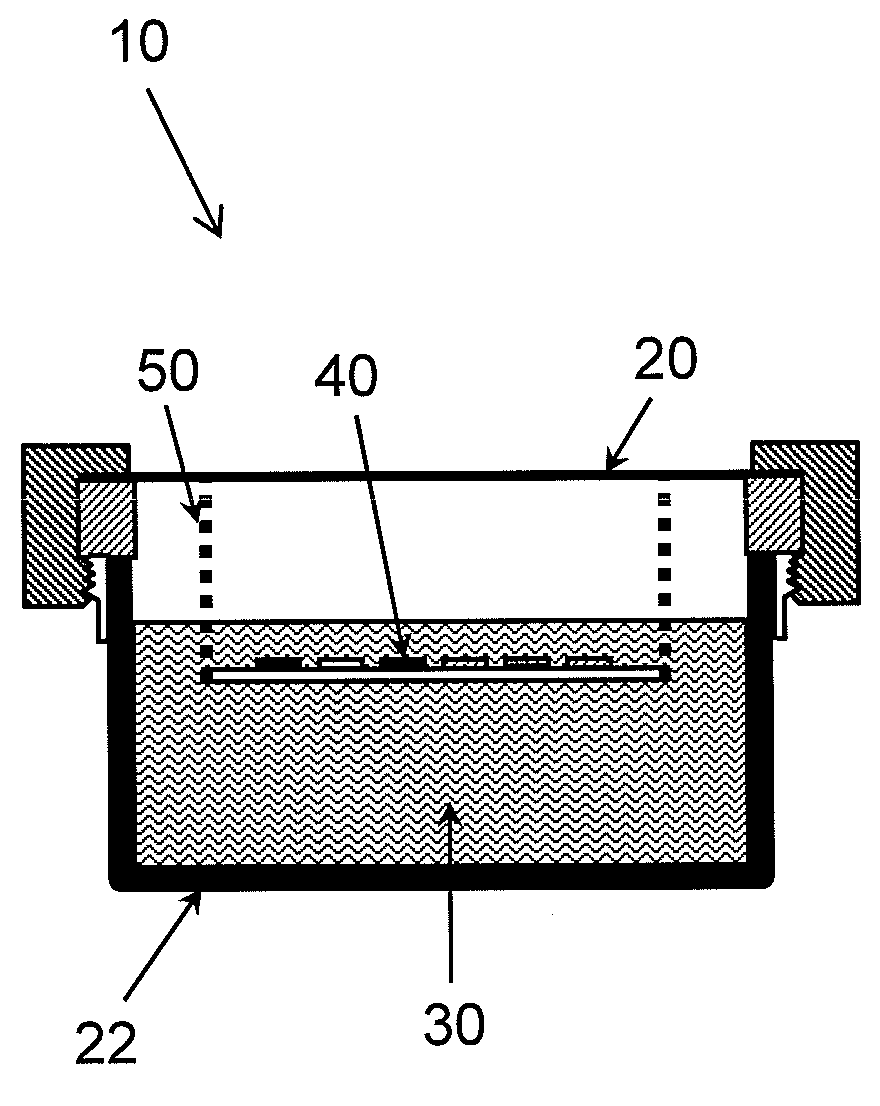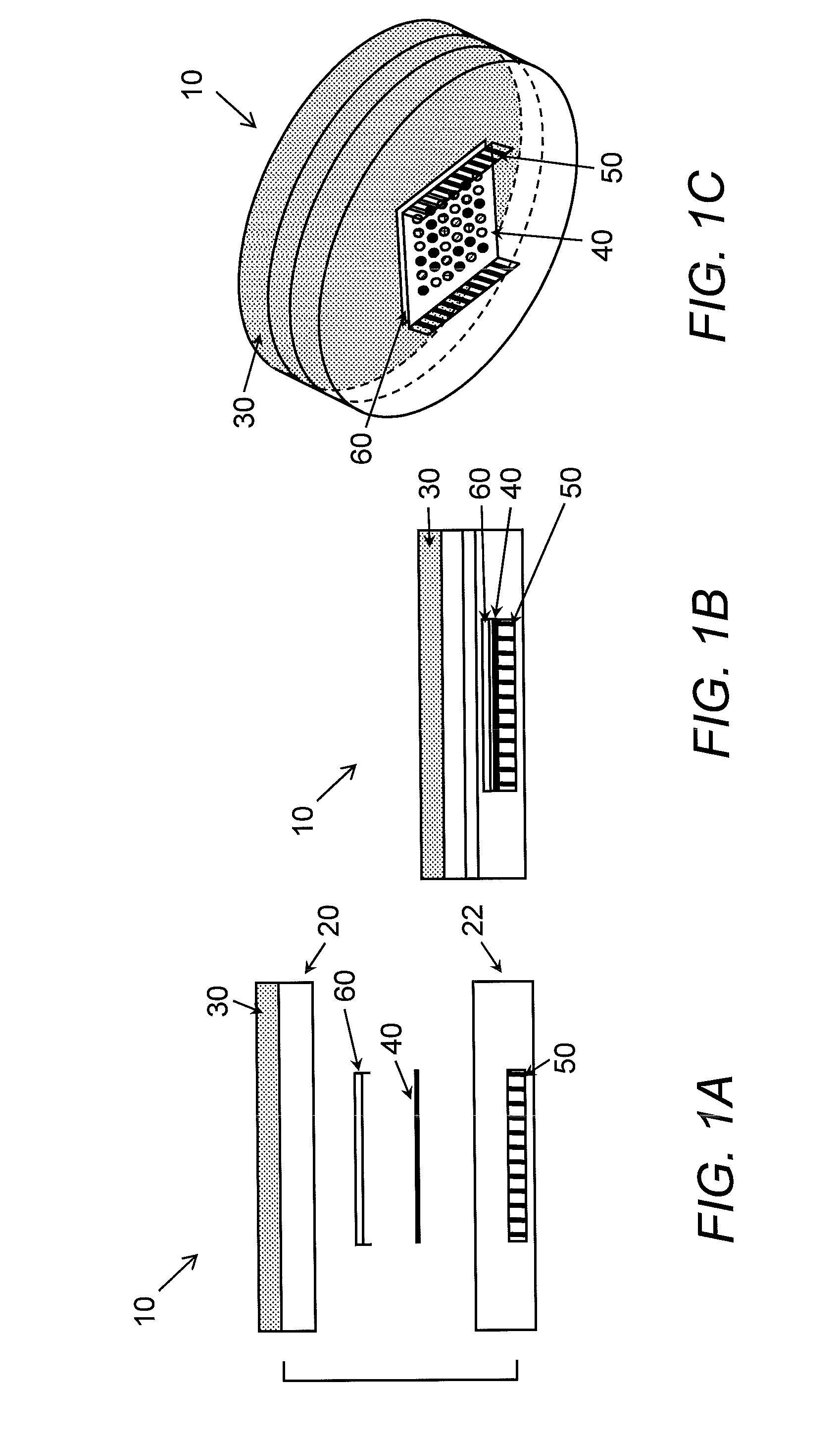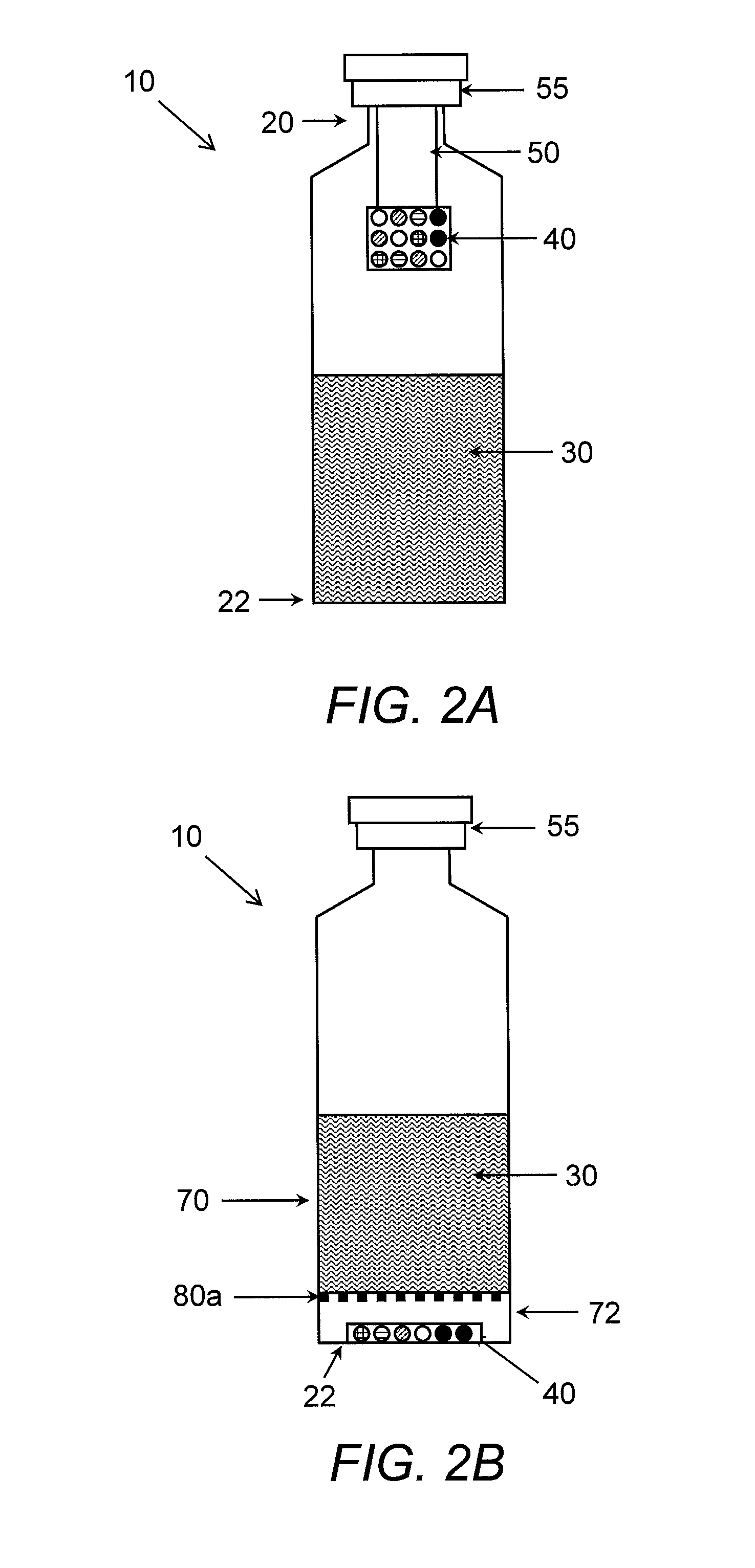Apparatus and method for detecting and identifying microorganisms
a microorganism and apparatus technology, applied in the field of apparatus and methods for detecting and identifying microorganisms, can solve the problems of relatively slow cell culturing, high cost of approach, and inability to detect and identify microorganisms
- Summary
- Abstract
- Description
- Claims
- Application Information
AI Technical Summary
Benefits of technology
Problems solved by technology
Method used
Image
Examples
example 1
Materials
[0090]With the exception of the colorimetric sensing elements, all other materials were obtained from the following sources. BACTO™ tryptic soy broth and columbia anaerobic sheep blood agar plates were purchased from Fisher Scientific, Inc (Hampton, N.H.). Sheep serum (S2263) was purchased from Sigma-Aldrich (St. Louis, Mo.). The type of media used for these experiments was chosen because it contains a food source for all of the bacteria studied and all of the species were known to grow on blood agar. Also, it was desirable to develop a system that could be used universally for sensing of all types of volatile bacterial metabolites. Bacteria were purchased from American Type Culture Collection (ATCC, (Manassas, Va.). All materials were used as received and bacteria cultures were stored at −70° C. until used. All UV-vis measurements were carried out at 600 nm against an appropriate blank.
[0091]Escherichia coli is a gram-negative bacterium that grows on a variety of agar medi...
example 2
Preparation of Liquid Media
[0096]Tryptic soy broth was prepared by dissolving 30 grams of the powdered media into 1 L of purified water. The resulting mixture was divided into 250 mL aliquots and autoclaved at 121° C. for 15 minutes. The bottles were then cooled to room temperature and an aliquot of ˜12.5 mL of sheep's serum (prepared beforehand and stored at −70° C. until needed) was added to create an approximate 5% sheep's serum solution by volume. Media bottles that were not used immediately were stored at room temperature without the addition of sheep serum.
example 3
Growth of Bacteria on Solid Media
[0097]Before each experiment, a solid media streak plate was prepared from frozen permanent cultures according to conventional methods (Freund & Lewis (1995) Proc. Natl. Acad. Sci. USA FIELD Publication Date: 1995 Mar. 28 92:2652-2656) to obtain single colonies for growth in liquid media culture. All plates were incubated at 37° C. until colonies were visible. Streak plates were then wrapped in PARAFILM and stored at 4° C. until further use. Each plate was used for no longer than one month to ensure colony viability, with the following exceptions. Cultures containing M. catarrhalis or S. pyogenes were prepared weekly because the relevant growth of these organisms on blood agar was less robust than that of other species being tested.
[0098]All solid media experiments were conducted at 37° C. in the incubator with a flatbed scanner housed therein. Colorimetric sensing elements were exposed to volatile bacterial metabolites by placing them print side dow...
PUM
| Property | Measurement | Unit |
|---|---|---|
| RH | aaaaa | aaaaa |
| optimal temperature | aaaaa | aaaaa |
| optimal temperature | aaaaa | aaaaa |
Abstract
Description
Claims
Application Information
 Login to View More
Login to View More - R&D
- Intellectual Property
- Life Sciences
- Materials
- Tech Scout
- Unparalleled Data Quality
- Higher Quality Content
- 60% Fewer Hallucinations
Browse by: Latest US Patents, China's latest patents, Technical Efficacy Thesaurus, Application Domain, Technology Topic, Popular Technical Reports.
© 2025 PatSnap. All rights reserved.Legal|Privacy policy|Modern Slavery Act Transparency Statement|Sitemap|About US| Contact US: help@patsnap.com



